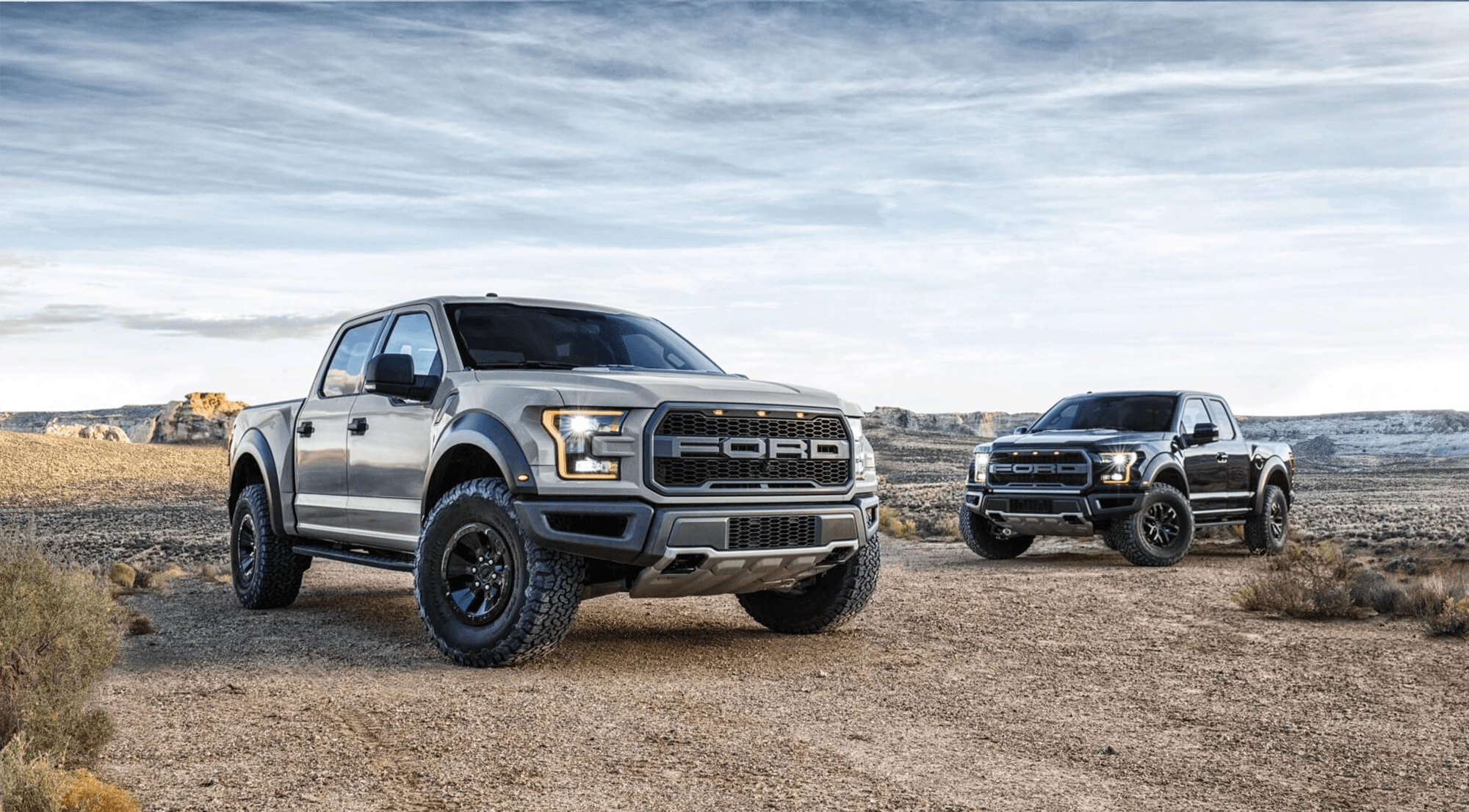
The Raptor was a legitimate hit for Ford. Though the company won’t break out the exact stats, insiders have said the Raptor was far more successful than Ford ever expected. Because the Raptor was such a unique and beloved truck, values of the first-generation trucks have remained strong. Our last search of Ebay Motors turned up several 2010 models whose owners were asking between $30,000 and $40,000. Those are impressive numbers for a 7-year-old pickup truck. The Raptor clearly has a rabid fan base.
The success of that first-generation truck meant the all-new one had to be improved on all fronts. It had to be quicker, more capable, and better to drive in every terrain. Naturally, we couldn’t wait to have seat time in the new beast. Recently, a $62,485 Lightning Blue Raptor Super Crew landed on our doorstep for a week of testing. We pushed the rig hard over our notorious 300-mile new truck evaluation test loop. We always spend a few hours in the dirt at Hungry Valley SVRA in Gorman, CA. But because this was a Raptor, we clocked some bonus time exploring the park. So, are we still infatuated with Ford’s radical off-roader? Let’s find out.
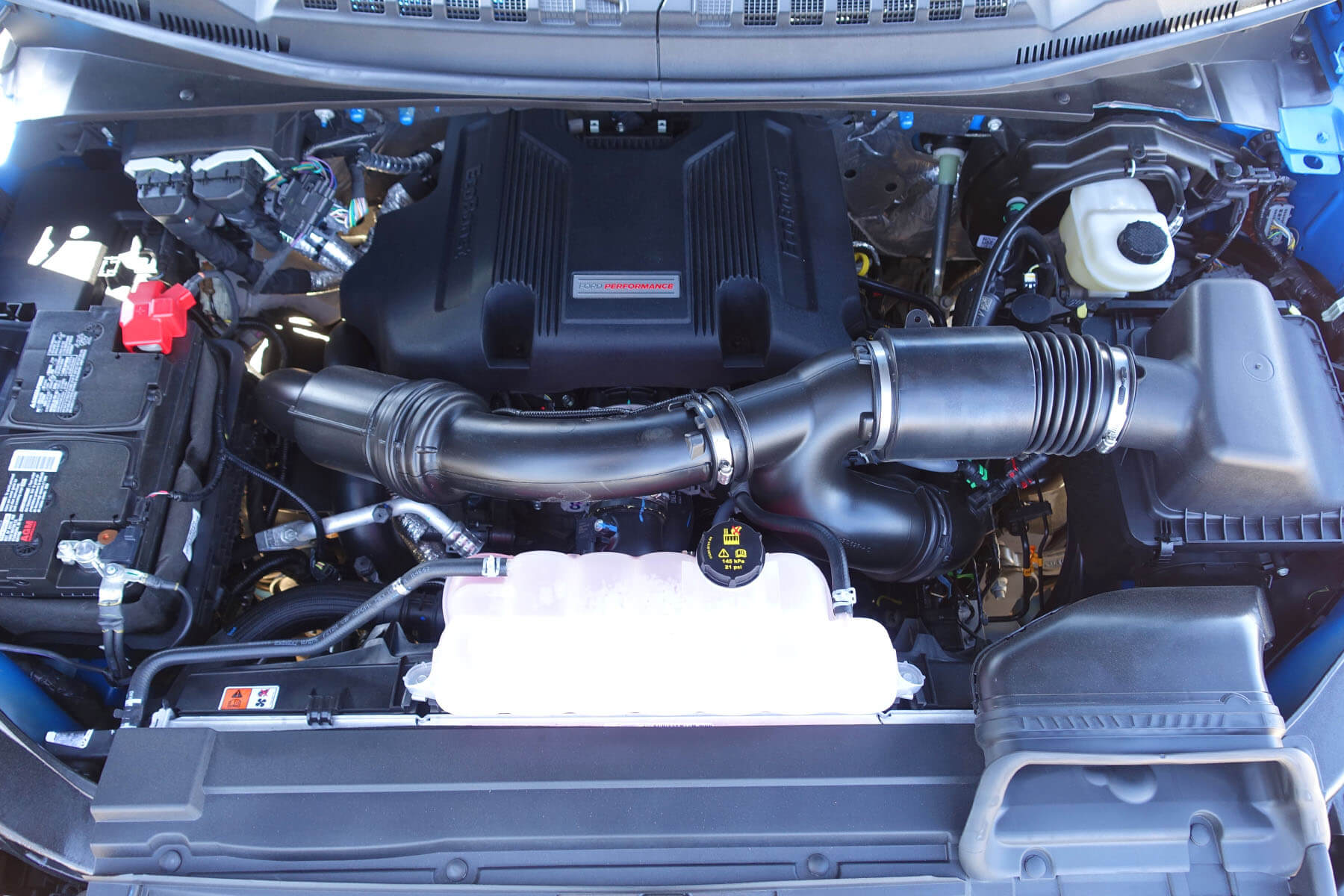
The Hardware
The new Raptor starts with the solid bones of the F-150, a truck last made new in 2015. That truck ditched both steel and cylinders to create a fullsize pickup that was lighter and more efficient, starting with the same stiff, boxed ladder frame with 77% high-strength steel. The previous generation had 23%. According to Ford, that frame was further beefed-up for Raptor duty. That’s excellent news for engineers developing a long-travel suspension.
That suspension is an evolution of the design in the last truck. Ford once again teamed up with Fox Shocks to develop the damping system. The new 3-inch diameter, nine-stage bypass shocks are 44% larger than those in the last Raptor. These dampers now feature an internal hydraulic bump stop. Overall wheel travel up front now measures a full 13 inches. That’s an increase of almost an inch over the last Raptor and almost double what you’d get in an F-150 FX4. Between those wider front A-arms sits a Ford 8.8-inch front diff. Our truck had the optional Torsen torque sensing limited-slip and 4.10:1 gears that comes with Equipment Group 802A. Out back, the Raptor uses alonger-travel leaf packs on each side and Fox shocks that work to deliver 13.9 inches of wheel travel. That’s 1.9 inches more than the last truck and 4.7 inches more than an F-150 FX4. All Raptors have the 9.75-inch rear axle loaded with Ford’s electronic locking differential.
The last Raptor used Ford’s strong 411 horsepower 6.2L V8 with 434 lb-ft. of torque. This new one ditches the V8 for a 3.5L twin-turbo V6. But this isn’t the same Ecoboost V6 that comes in more pedestrian F-150s. Nope. Engineers went to work on this V6 adding turbos with electric wastegates and increased boost, piston-cooling jets, and a fuel system with both port and direct injection. The Raptor’s engine also includes a new crankshaft as well as an all-new valvetrain system. The Raptor’s twin-turbo V6 exhales through a specifically-tuned dual exhaust, too. To keep everything cool, there are dual 100-watt electric fans and a larger radiator. All that V6 massaging results in a stunning 450 horsepower at 5,000 rpm and 510 lb-ft of torque at 3,500 rpm. That’s a 39 horsepower and 76 lb-ft. of torque bump over the standard F-150s Ecoboost V6. It’s the most powerful gas engine in any pickup truck, edging out GM’s 6.2L V8 with its 420 hp and 460 lb-ft of torque.
To this potent twin-turbocharged motor, Ford pairs its new 10-speed automatic. This smart transmission allows for low-speed non-sequential shifts and uses magnesium paddle shifters for manual control in addition to buttons on the side of the shifter. The gearbox might pack four more speeds, but Ford says it’s only an inch longer than the old 6-speed. Now Ford could have easily used the standard F-150 transfer case.But instead, they worked with Borg Warner to develop a new one that could offer 2WD, a clutch-based on-demand all-wheel drive mode, and high and low range (2.64:1) that can both be shifted on the fly. Speaking of low-speed ‘wheeling, the Raptor has a solid 50:1 crawl ratio.
These functions are all available with the usual dash-mounted knob, including the rear locker. But they can also be changed fluidly within the all-new six-mode 4WD Terrain Management System by toggling through settings on the steering wheel-mounted buttons. Pick a terrain mode (Normal, Sport, Weather, Mud and Sand, Baja, or Rock Crawl) and the Raptorwill automatically shift the transfer case, lock or unlock the rear differential, and alter the electrically-assisted steering system (with normal, comfort and sport modes), engine, transmission and stability and traction control systems. It’s easily the smartest 4WD system ever offered on any pickup truck and matches (and in some cases even surpasses) the capabilities of the systems in some six-figure luxury SUVs.
Our Raptor weighed 5,830 lbs. at our local scales and carried a GVWR of 7,050 lbs. According to the door sticker it had a payload of 1,181 lbs. Ford says our truck can tow 8,000 lbs. The Raptor is no featherweight. Compared to the last F-150 we tested, a bare-bones XL Supercab model, this Raptor weighs 770 lbs. more. Interestingly, this Raptor is less than 100 lbs lighter than the last Ram Rebel we tested.
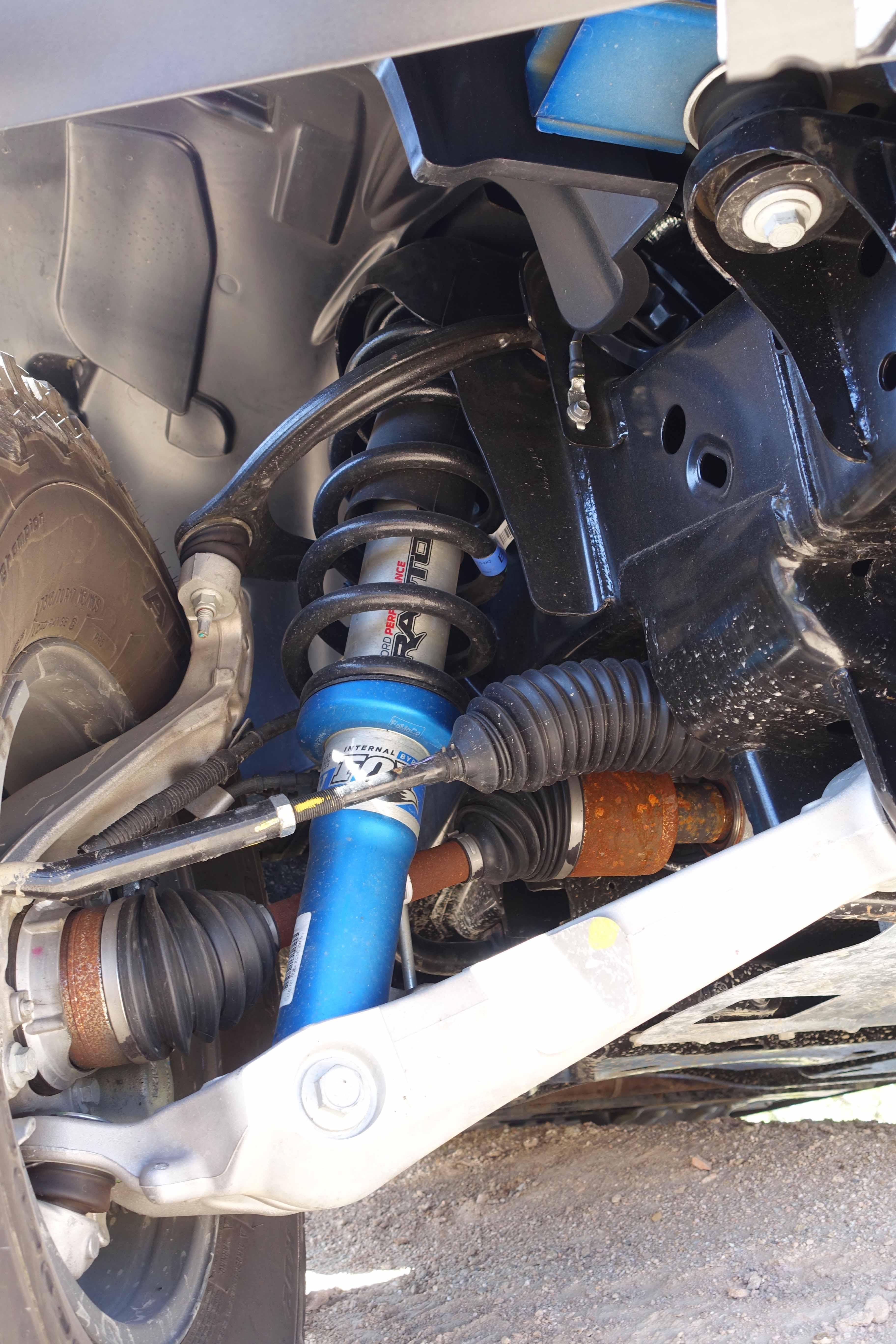
The Raptor’s beefy front suspension is similar to the one used in the last-generation model. Ford increased the wheel travel to 13 inches and employs bigger Fox Racing shocks. Inside the Ford 8.8-inch center section is a Torsen differential and 4.10:1 gears.
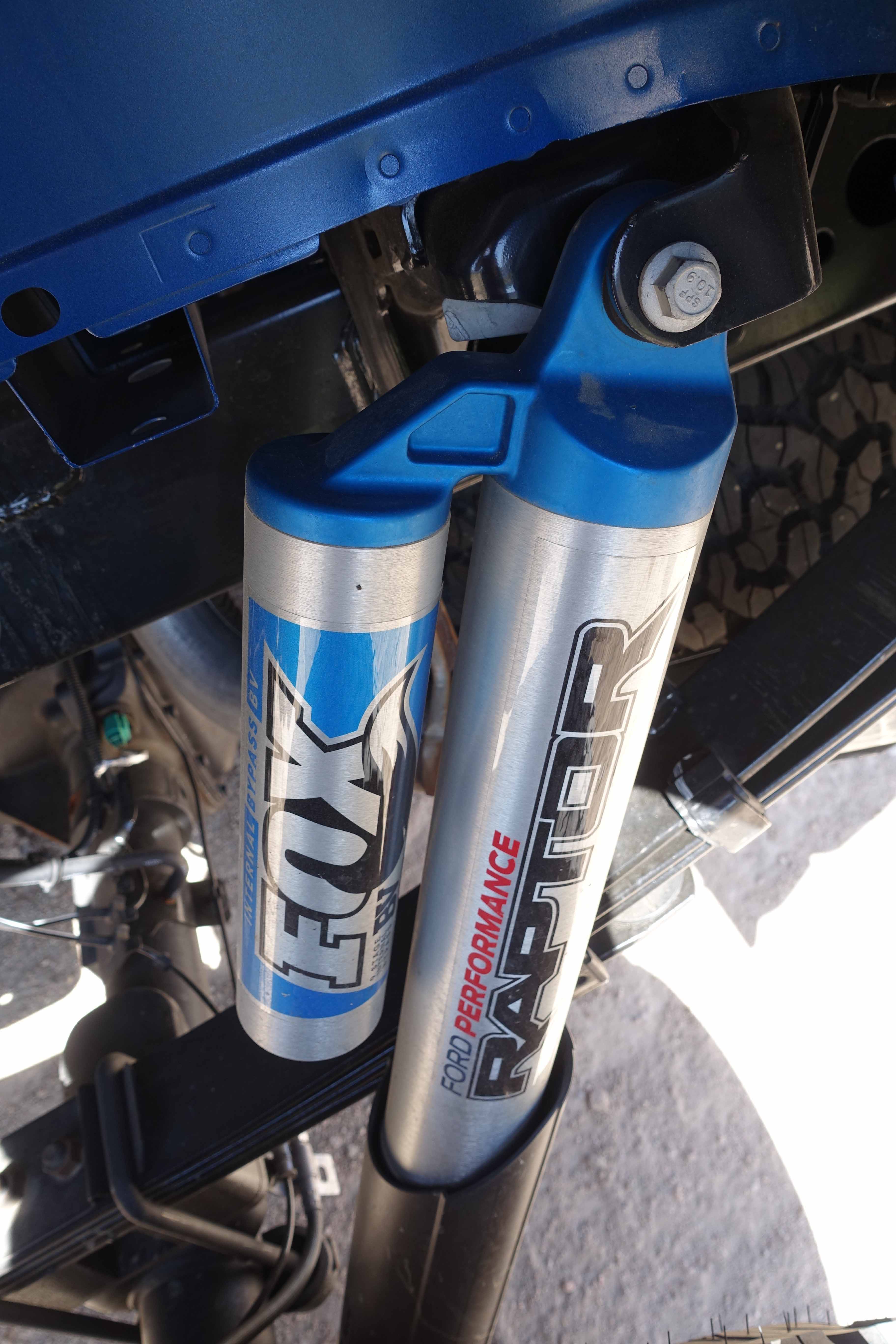
On the Street
To the average person, the Raptor looks like it should deliver a punishing, stiff-legged ride on the street. But we know better. Like the previous model, this truck rides incredibly smooth. There are few potholes, dips or bumps that will upset the Raptor’s chassis on the street. It’s so supple, you’ll want to drive it quickly over the worst pavement you can find, just to see if you can feel the impacts.
On the street, Normal Mode means the Raptor is completely docile. At nearly every stoplight the stop/start system will cut the engine to save fuel. Under modest throttle, the transmission will upshift softly to improve mpgs and create an environment that’s very close to a regular production F-150. In other words, this is the mode for commuting. That’s why you’ll want to drive around with the Terrain Management System in Sport mode as often as possible. The personality becomes so much more fun. The steering feels meatier and more responsive and so does the entire powertrain. That 10-speed transmission hammers off quick, precise and very firm shifts – and we do mean hammer. It almost feels like the transmission has an old school “shift kit” installed. It’s always ready with a downshift. The deep torque reserves of this engine make this nearly three-ton rig feel very quick and athletic. Our friends at Car and Driver recorded a 0-60 mph run of 5.1 seconds. That’s just a half second slower than a Mustang GT. However, don’t expect the Raptor to sound as good as a V8 Mustang. We wish that six had a better exhaust note. But generally, we don’t miss the V8 and neither will you.
On the freeway, with the Terrain Response back in Normal mode, the beastly Raptor is once again soft and silent. The truck is unfazed by steep grades. For most of ourhighway drive, the transmission remained in 10th gear and loafed along at 1,800 rpm at 70 mph. It did downshift to 9th (2,000 rpm) at one point and then to 8th (2,400 rpm) very briefly. But generally, this engine makes so much torque down low that it rarely needs to leave 10th gear. The Raptor would be an excellent road trip machine. For all its talents in the dirt, and fun-loving personality on the street, you can pile the miles on without fatigue. That said, even though this has a more economical V6, on our test we recorded 14.9 mpg. That’s toward the bottom of the EPA ratings of 15 mpg city and 18 mpg highway. However, our heavier-than-normal right foot probably played a role in that number.
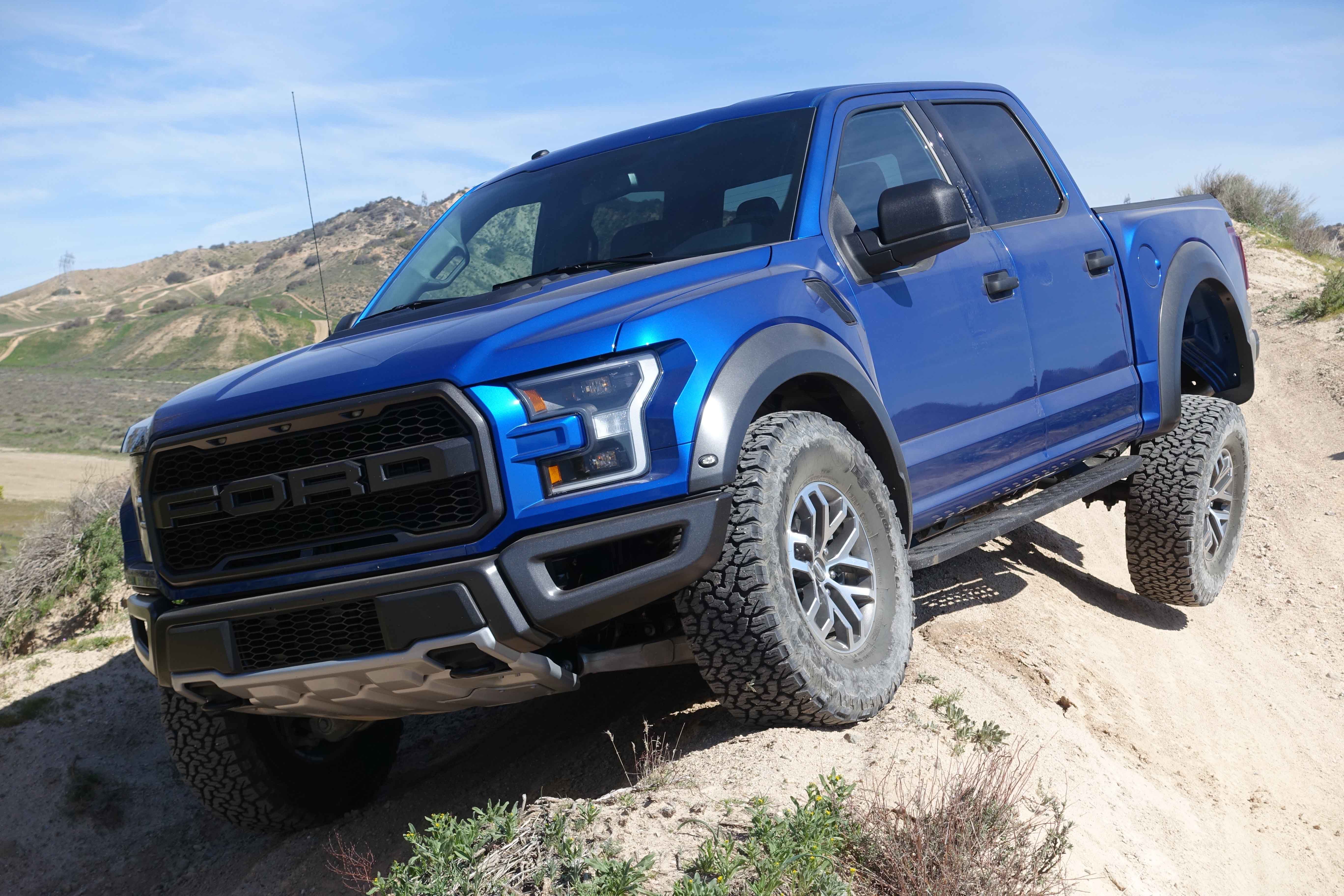
On the Trail
You can do more in two-wheel drive piloting a Raptor than you can in low range ‘wheeling most modern 4X4s. We’re not just talking about the higher-speed desert running. The Raptor has so much wheel travel that you can muscle it up some fairly hairy, rutted climbs without ever switching into 4WD. But when you do, it’s an animal.
There’s about a foot of ground clearance under that front skidplate and over 10 inches under the rear axle thanks to those tall 315/70R17 BF Goodrich All-Terrains. This truck is well-protected. There’s skid plating that covers nearly every vulnerable spot under the front end. After several hours playing in the dirt and crisscrossing rocky streambeds, we never once heard a rock ding the undercarriage. However, we did hit those running boards a few times. Luckily, they are really more like rock rails and designed to take the abuse.
Since this is a Raptor, we spent quite a bit of time on the higher-speed trail sections of the park. Interestingly, plain old 2WD wasn’t as capable as we hoped in the sand. The rear axle hopped quite a bit. once we did get on top of the sand, the Raptor couldn’t gain traction, fishtailing under throttle. Unlike lesser Ford 4X4 trucks, the rear electronic locking diff can’t be activated in two-wheel drive.
So, we switched to the Baja mode. In Baja, (which we liked to call Mint 400 or San Filipe 250 mode) the Raptor moves into 4WD high range, the transmission has a unique shift schedule and Ford does some mechanical trickery under the hood to minimize turbo lag. The result is the ability to not only hook up and accelerate very quickly in the sand but the mode allows the driver to effortlessly drift the big beast. This really is the best mode for any sort of higher-speed ‘wheeling. It feels like the engineers really sweated the programming on these mode calibrations because they are really well done. The big wheel travel of the Raptor allowed us to soar across the rough washboard roads and through mild rutted sections at almost twice the speed we were able to manage in the Toyota Tacoma TRD Pro. That’s how good this truck is.
At the push of a button, Rock Crawl mode automatically locks the rear diff and puts the transfer case in 4WD low. The Raptor works very well as a slow-speed four-wheeler. The long-travel suspension combined with traction diffs at both ends made our usual “tough” trail sections for stock 4X4s effortless. We could pick any line we liked and the Raptor would simply eat up the trail. We did notice that when the rear suspension was fully crossed-up at full compression, the tires just barely rubbed the flares.
The park’s worst rutted hill climbs were similarly dispatched by simply crawling under light throttle. The aggressive tires combined with the wide track and excellent traction management systems (both mechanical and electronic) really work well on hill climbs. However, in tight rocky sections we did worry about body damage. So, while capable enough to get through a fairly tough rock garden, the Raptor’s extreme width was a limiting factor.
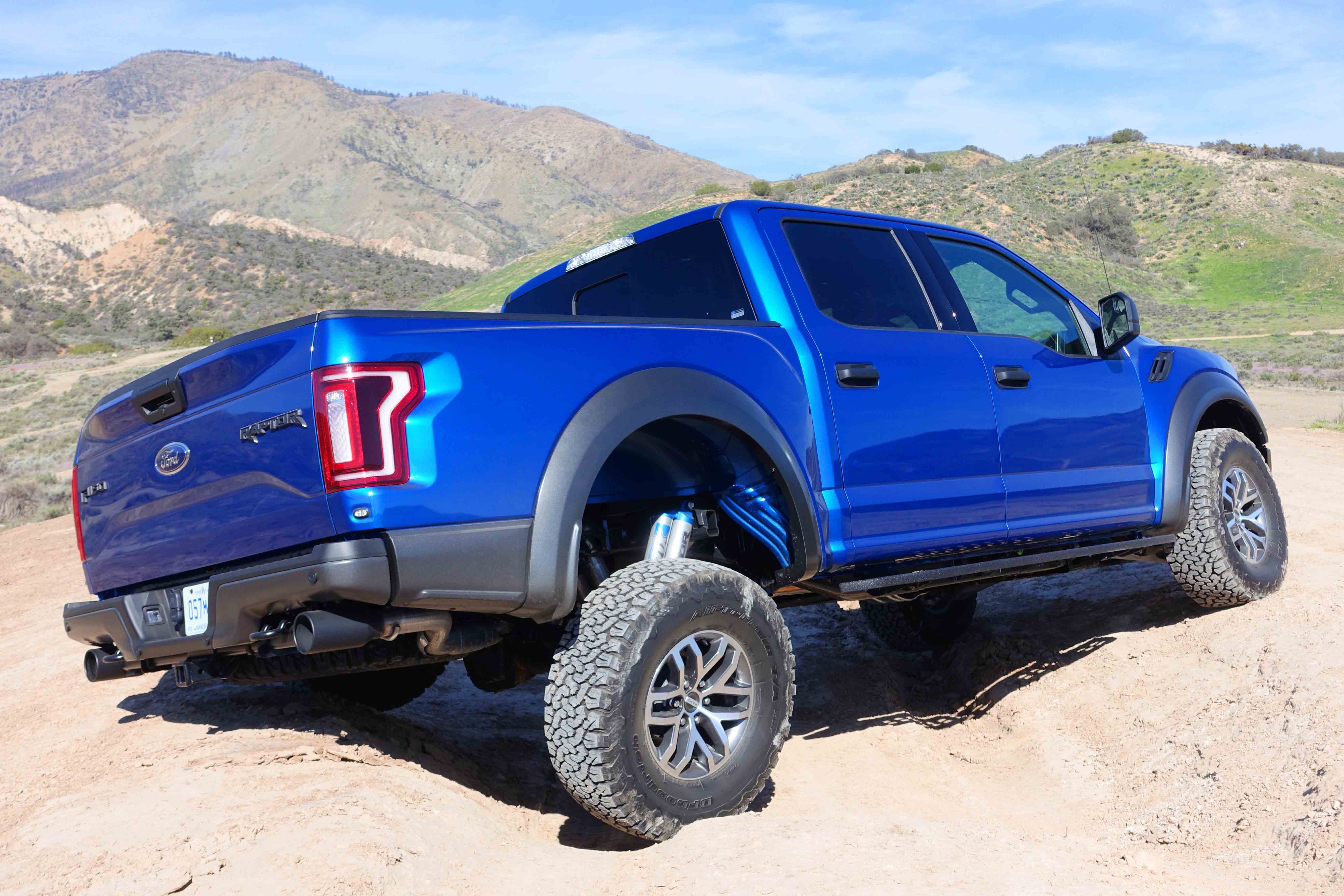
The Bottom Line
The Raptor is even more fun and capable than the old model. But once you add all the goodies and option packages, it becomes a very expensive truck. Our test rig was just over $60,000 and didn’t have a push button start system or dual zone climate control. Similarly, for such an impressive truck mechanically, the interior could use some personalization. To our eye, it looks too much like a regular F-Series from behind the wheel. Still, those are minor complaints. There’s nothing else that comes from a dealership lot that can hang with the Raptor. We’d certainly welcome one in our own garage.



2